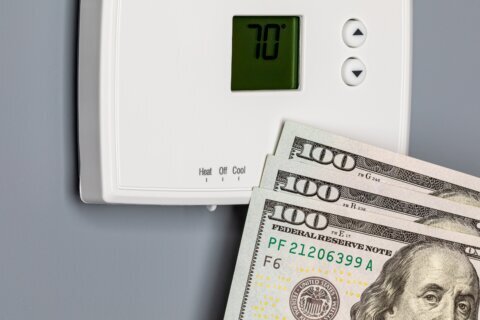WASHINGTON — You hear the term “Code Orange” quite a bit in our weather forecasts here in the D.C. region, particularly in the summer months. But what exactly does “code orange” mean for you when you hear it?
The term “Code Orange” refers to the Air Quality Index. This is measured daily and will determine how clean or polluted the air is around the region by focusing on five major pollutants regulated by the Clean Air Act.
These pollutants are particle pollution/particulate matter, carbon monoxide, ground-level ozone, sulfur dioxide and nitrogen dioxide. For each one of these, the Environmental Protection Agency has set national air quality standards to protect the health of the public. If these pollutants exceed the nationally set number, then they could pose health risks to the public. And that is where the color scale comes in.

According to the EPA, this scale represents index values from 0-500. Higher numbers represent a greater threat to public health.
Each category corresponds to a different level of health concern. The federal government defines the six levels of health concern:
- “Good” 0 — 50. Air quality is considered satisfactory, and air pollution poses little or no risk.
- “Moderate” 51 — 100. Air quality is acceptable. However, there could be a moderate health concern for a small number of people. For example, those who are unusually sensitive to ground level ozone pollution might experience respiratory symptoms.
- “Unhealthy for Sensitive Groups” 101 — 150. Although the general public is not likely to be affected at this range, individuals with lung disease, older adults and children are at a greater risk from exposure to ground level ozone pollution. Also, those with heart and lung disease, older adults and children are at greater risk from the presence of particles in the air.
- “Unhealthy” 151 — 200. Everyone might begin to experience some adverse health effects, and members of the sensitive groups could experience more serious effects.
- “Very Unhealthy” 201 — 300. This would trigger a health alert signifying that everyone may experience more serious health effects.
- “Hazardous” greater than 300. This would trigger a health warning of emergency conditions. The entire population is more likely to be affected.
Respiratory symptoms can include coughing, difficulty breathing and pain when taking a deep breath, according to airnow.gov.

The air is stagnant with high pressure centered overhead, which allows the pollutants to build up in the atmosphere. So that leaves us in a “Code Orange,” which means the air might be unhealthy for sensitive groups if those groups are spending an extended period of time outside either for exercise or for other outdoor activities.
Know your limits when heading outside on another beautiful day here in D.C.







